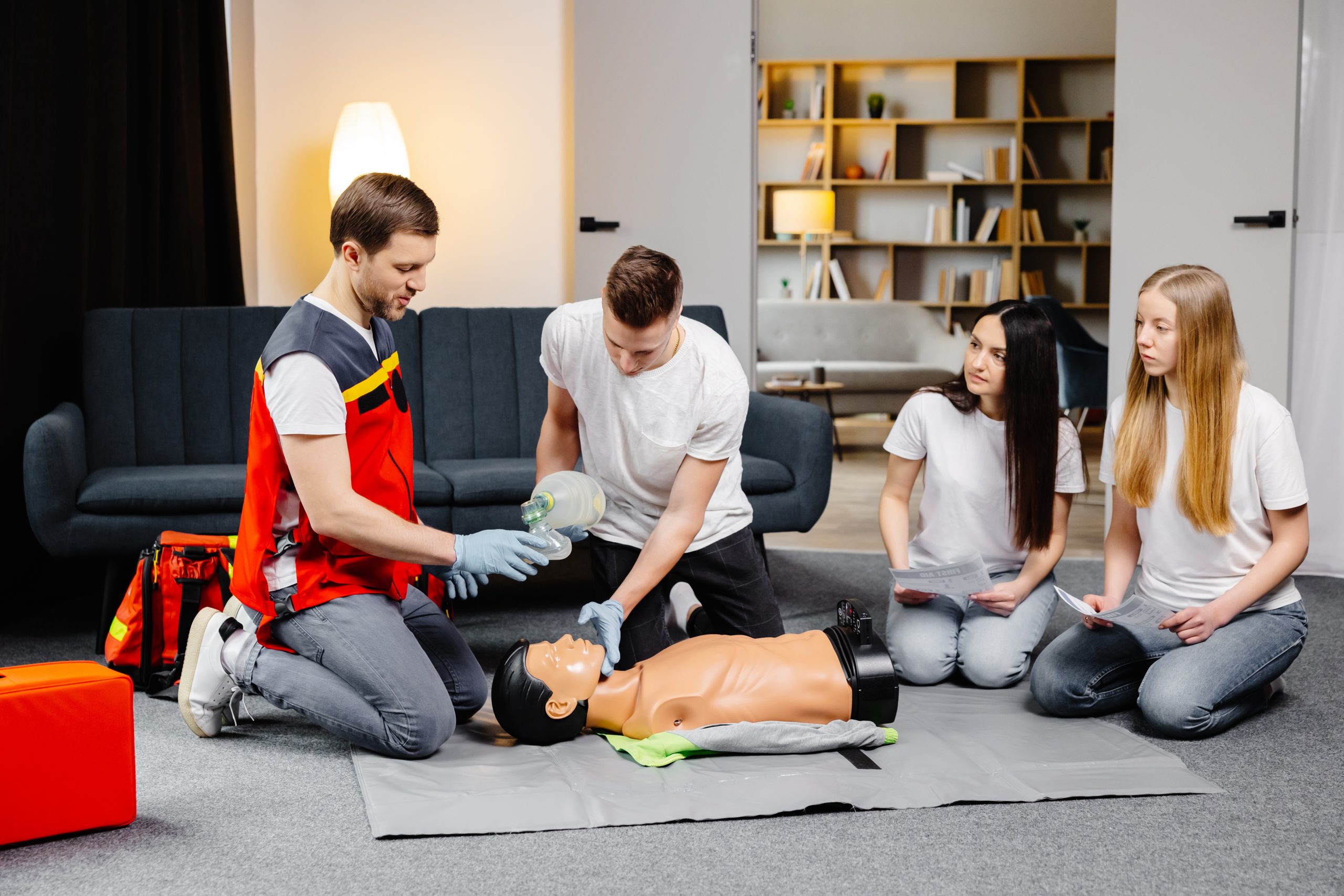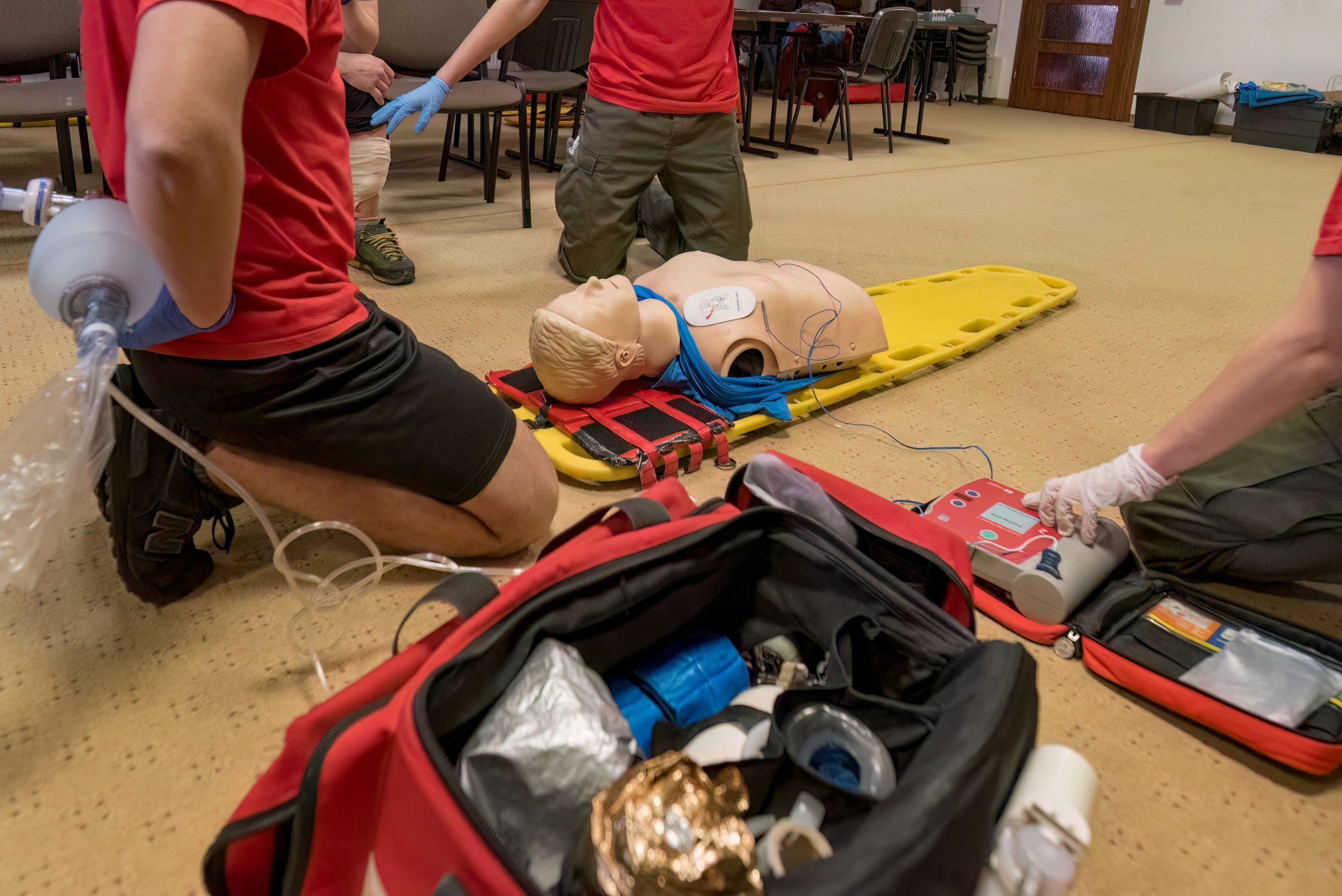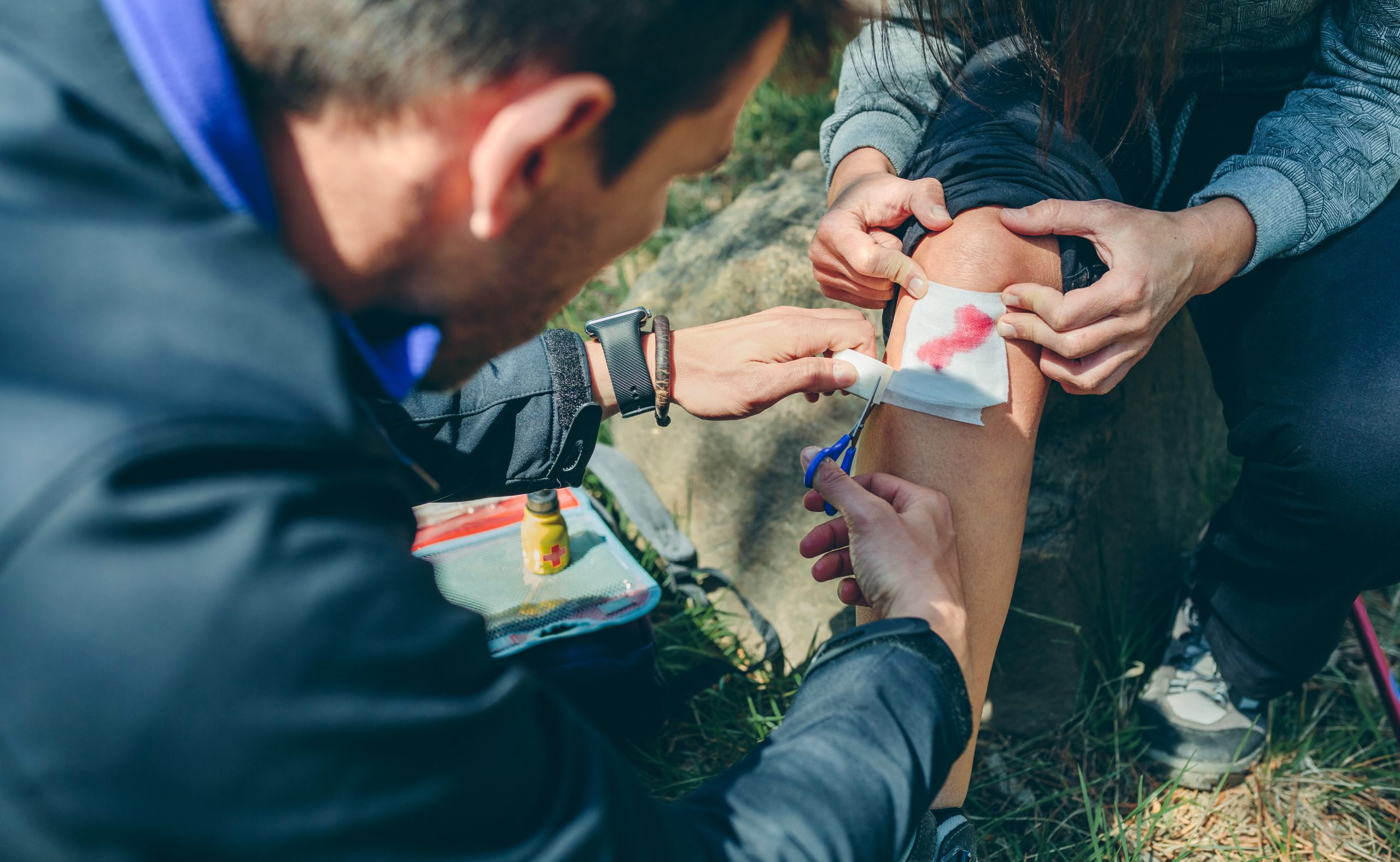
Welcome to Austin! A city known for its vibrant music scene, incredible food, and beautiful green spaces. But living in Central Texas also means being ready for some unique challenges, from scorching summer heat to sudden flash floods.
Are you truly prepared for an emergency in Austin?
Being prepared isn’t about being paranoid; it’s about being empowered. It’s knowing you have the tools, the plan, and the skills to protect yourself and your loved ones when it matters most. This guide will walk you through everything you need to know to become a confident and prepared Austinite.
Understanding Austin’s Unique Emergency Risks
The first step to preparedness is knowing what you’re preparing for. Austin’s environment presents a few key risks every resident should understand.
- Extreme Heat: Austin summers are no joke, with temperatures frequently soaring above 100°F. This poses a serious risk for heat exhaustion and life-threatening heat stroke, especially for children, the elderly, and anyone working or playing outdoors.
- Flash Floods: Central Texas is known as “Flash Flood Alley” for a reason. Heavy rains can turn dry creek beds and low-lying roads into dangerous torrents in minutes. Being aware of low water crossings and having an evacuation plan is critical.
- Severe Thunderstorms & Tornadoes: Springtime often brings severe weather, including thunderstorms with high winds, large hail, and the potential for tornadoes. Knowing the difference between a watch and a warning, and where to take shelter, can save your life.
- Large Public Gatherings: With major events like Austin City Limits (ACL) and South by Southwest (SXSW), our city hosts huge crowds. Medical emergencies can happen anywhere, and knowing how to respond in a crowded environment is a valuable skill.

Step 1: Build Your Austin-Ready Emergency Kit
When an emergency strikes, you may need to survive on your own for several days. A disaster preparedness kit, or a “go-bag,” is your personal collection of essential supplies.
Every kit should be customized for your family’s needs, but here are the non-negotiables for every Austin household.
The Essentials for Your Go-Bag:
- Water: The absolute most important item. Plan for one gallon of water per person, per day, for at least three days. In Austin’s heat, you may want to store even more.
- Food: A three-day supply of non-perishable food that doesn’t require cooking. Think protein bars, canned goods (with a can opener!), and dried fruit.
- First-Aid Kit: A well-stocked kit is crucial. You can buy a pre-made one, but consider adding items like extra bandages, antiseptic wipes, pain relievers, blister treatment, and any personal prescription medications.
- Flashlight & Batteries: Power outages are common during storms. Pack a powerful flashlight and extra batteries. A hand-crank flashlight is an excellent backup.
- Weather Radio: A battery-powered or hand-crank NOAA Weather Radio will provide you with emergency alerts even if cell service and internet are down.
- Phone Charger & Power Bank: Keep a fully charged power bank ready to go so you can stay connected.
- Cash: If power is out, credit card machines and ATMs won’t work. Keep a small amount of cash in small bills.
- Important Documents: Store copies of your driver’s license, passport, birth certificate, and insurance policies in a waterproof bag or digitally on a password-protected thumb drive.
Think about your personal needs. Do you have pets? Pack food and water for them. Have an infant? Don’t forget formula and diapers.
Step 2: Create Your Family Emergency Plan
A kit is what you have, but a plan is what you do. A family emergency plan ensures everyone knows how to communicate and where to go when disaster strikes.
Key Components of Your Plan:
- Communication: Your family may not be together when an emergency happens. Choose an out-of-state contact person that everyone can call or text. It’s often easier to make a long-distance call than a local one during a regional emergency.
- Meeting Places: Designate three meeting spots.
- Indoor Spot: A safe location within your home to gather during a tornado or severe storm (like a basement, storm cellar, or interior room on the lowest floor).
- Neighborhood Spot: A location right outside your home in case of a fire (e.g., a specific tree or a neighbor’s mailbox).
- Regional Spot: A public place, like a library or community center, where you can meet if you can’t get home.
- Evacuation Routes: Know your community’s evacuation routes. If you live in a flood-prone area, map out a path to higher ground. Practice driving the route with your family.
Once you have your plan, practice it! Run drills with your family a couple of times a year. This helps build muscle memory and reduces panic during a real event.
Step 3: The Most Important Tool is You – Get Lifesaving Skills
You can have the best kit and a perfect plan, but the most valuable resource in an emergency is a person who knows what to do. This is where lifesaving training comes in.
Knowing how to respond in the first few minutes of a medical emergency can mean the difference between life and death before professional help arrives.
CPR (Cardiopulmonary Resuscitation)
What is it? CPR is an emergency procedure that combines chest compressions with artificial ventilation (rescue breaths) to keep blood and oxygen flowing to the brain and other vital organs when someone’s heart has stopped beating.
Why do you need it in Austin? Sudden cardiac arrest can happen to anyone, at any time. It can be triggered by a heart attack, electrocution from a downed power line, or even as a secondary event from severe heat stroke. Performing immediate CPR can double or even triple a person’s chance of survival.
AED (Automated External Defibrillator)
What is it? An AED is a sophisticated, yet easy-to-use, portable device that analyzes the heart’s rhythm and, if necessary, delivers an electrical shock (defibrillation) to help the heart re-establish an effective rhythm.
Why is it important? You see these devices in airports, gyms, and offices across Austin for a good reason. When used alongside CPR, an AED is the most effective way to save a life from sudden cardiac arrest. Our training teaches you exactly how to use one with confidence.
First Aid
What is it? First Aid is the immediate assistance given to any person suffering from either a minor or serious illness or injury.
Why is it essential for Austinites? Think about our common risks.
- Heat Stroke: Do you know the signs and how to cool someone down safely?
- Cuts and Scrapes: After a storm with broken glass and debris, do you know how to properly clean and bandage a wound to prevent infection?
- Sprains and Fractures: If someone takes a fall while hiking the Greenbelt, can you stabilize the injury?
First Aid training prepares you for these situations and so much more. It’s the practical, hands-on knowledge that makes your first-aid kit truly useful.
BLS (Basic Life Support)
What is it? BLS is a higher level of medical care for victims of life-threatening illnesses or injuries until they can be given full medical care at a hospital. It is the standard for healthcare professionals.
Who is it for? BLS certification is perfect for nurses, paramedics, dental assistants, and other healthcare providers. It’s also an excellent choice for anyone who wants to take their emergency response skills to the next level, including lifeguards, teachers, or dedicated community volunteers. The training covers advanced skills like team-based resuscitation and advanced airway management.

Empower Yourself and Your Community
Being prepared is a gift you give to yourself, your family, and your community. When you have the skills to act, you transform from a bystander into a vital first responder. You become an asset, capable of providing comfort and critical care in a time of chaos.
Imagine the peace of mind that comes from knowing you’re ready for anything Austin throws your way. You have your kit, your family has a plan, and you have the skills to save a life.
Don’t wait for an emergency to wish you had been more prepared. The time to act is now. Take the most important step in your preparedness journey by getting certified.
Ready to become a lifesaver? Contact CPR Near Me today to find the perfect CPR, AED, First Aid, or BLS class for you and your family. Let’s make Austin not just a fun place to live, but a safer one, too.
Frequently Asked Questions (FAQ)
Q: What is the main difference between CPR and First Aid training?
A: The main difference is their primary focus.
- CPR (Cardiopulmonary Resuscitation) specifically targets one life-threatening condition: cardiac arrest, where the heart has stopped beating. Training focuses on performing chest compressions and rescue breaths to circulate oxygenated blood until help arrives.
- First Aid is much broader. It covers a wide range of common injuries and medical emergencies, such as controlling bleeding, treating burns, managing choking, responding to seizures, and treating environmental emergencies like heat stroke or hypothermia. A good certification course will include CPR, but its scope is much wider.
Q: How long does a CPR certification last?
A: Standard CPR and BLS certifications from most nationally recognized organizations, including the American Heart Association and the American Red Cross, are valid for two years. You must complete a recertification or renewal course before your expiration date to keep your skills current and your certification active.
Q: Who should get a BLS certification instead of a standard CPR class?
A: You should get a BLS (Basic Life Support) certification if you are a healthcare professional or your job requires it. This includes nurses, doctors, paramedics, EMTs, dental assistants, physical therapists, and other medical personnel. BLS is also recommended for anyone who wants a more in-depth understanding of emergency resuscitation, as it includes training on team dynamics, use of a bag-mask device, and other advanced skills.
Q: What are the most important items for an Austin-specific emergency kit?
A: While all standard kit items are important, for Austin you should place extra emphasis on:
- Extra Water: Due to the risk of extreme heat, having more than the recommended one gallon per person per day is wise.
- NOAA Weather Radio: Critical for getting flash flood and tornado warnings if cell service or power is out.
- Waterproof Bag for Documents: Essential for protecting your important papers from floodwater.
- Local Maps: In case of evacuation, having physical maps of Austin and the surrounding Hill Country is useful if GPS is unavailable.
Q: Why is AED training so important if the device is “automated”?
A: While AEDs are designed to be user-friendly, training is crucial for confidence and effectiveness. In a high-stress emergency, training ensures you can:
- Act quickly without hesitation.
- Properly place the pads on the victim’s bare chest.
- Understand the AED prompts and when to clear the area for a shock.
- Seamlessly integrate the AED with high-quality CPR to give the person the absolute best chance of survival.
Q: Can I really make a difference with these skills before paramedics arrive?
A: Absolutely. You can make the most difference. For a victim of sudden cardiac arrest, their chance of survival decreases by about 10% for every minute that passes without CPR and defibrillation. Since the average ambulance response time can be several minutes, the actions of a bystander in those first few critical moments are often the single most important factor in a successful outcome.
{ “@context”: “https://schema.org”, “@type”: “FAQPage”, “mainEntity”: [{ “@type”: “Question”, “name”: “What is the main difference between CPR and First Aid training?”, “acceptedAnswer”: { “@type”: “Answer”, “text”: “The main difference is their primary focus. CPR (Cardiopulmonary Resuscitation) specifically targets one life-threatening condition: cardiac arrest, where the heart has stopped beating. Training focuses on performing chest compressions and rescue breaths to circulate oxygenated blood until help arrives. First Aid is much broader. It covers a wide range of common injuries and medical emergencies, such as controlling bleeding, treating burns, managing choking, responding to seizures, and treating environmental emergencies like heat stroke or hypothermia. A good certification course will include CPR, but its scope is much wider.” } },{ “@type”: “Question”, “name”: “How long does a CPR certification last?”, “acceptedAnswer”: { “@type”: “Answer”, “text”: “Standard CPR and BLS certifications from most nationally recognized organizations, including the American Heart Association and the American Red Cross, are valid for two years. You must complete a recertification or renewal course before your expiration date to keep your skills current and your certification active.” } },{ “@type”: “Question”, “name”: “Who should get a BLS certification instead of a standard CPR class?”, “acceptedAnswer”: { “@type”: “Answer”, “text”: “You should get a BLS (Basic Life Support) certification if you are a healthcare professional or your job requires it. This includes nurses, doctors, paramedics, EMTs, dental assistants, physical therapists, and other medical personnel. BLS is also recommended for anyone who wants a more in-depth understanding of emergency resuscitation, as it includes training on team dynamics, use of a bag-mask device, and other advanced skills.” } },{ “@type”: “Question”, “name”: “What are the most important items for an Austin-specific emergency kit?”, “acceptedAnswer”: { “@type”: “Answer”, “text”: “While all standard kit items are important, for Austin you should place extra emphasis on:\n1. Extra Water: Due to the risk of extreme heat, having more than the recommended one gallon per person per day is wise.\n2. NOAA Weather Radio: Critical for getting flash flood and tornado warnings if cell service or power is out.\n3. Waterproof Bag for Documents: Essential for protecting your important papers from floodwater.\n4. Local Maps: In case of evacuation, having physical maps of Austin and the surrounding Hill Country is useful if GPS is unavailable.” } },{ “@type”: “Question”, “name”: “Why is AED training so important if the device is \”automated\”?”, “acceptedAnswer”: { “@type”: “Answer”, “text”: “While AEDs are designed to be user-friendly, training is crucial for confidence and effectiveness. In a high-stress emergency, training ensures you can:\n- Act quickly without hesitation.\n- Properly place the pads on the victim’s bare chest.\n- Understand the AED prompts and when to clear the area for a shock.\n- Seamlessly integrate the AED with high-quality CPR to give the person the absolute best chance of survival.” } },{ “@type”: “Question”, “name”: “Can I really make a difference with these skills before paramedics arrive?”, “acceptedAnswer”: { “@type”: “Answer”, “text”: “Absolutely. You can make the *most* difference. For a victim of sudden cardiac arrest, their chance of survival decreases by about 10% for every minute that passes without CPR and defibrillation. Since the average ambulance response time can be several minutes, the actions of a bystander in those first few critical moments are often the single most important factor in a successful outcome.” } }] }
Leave a Reply